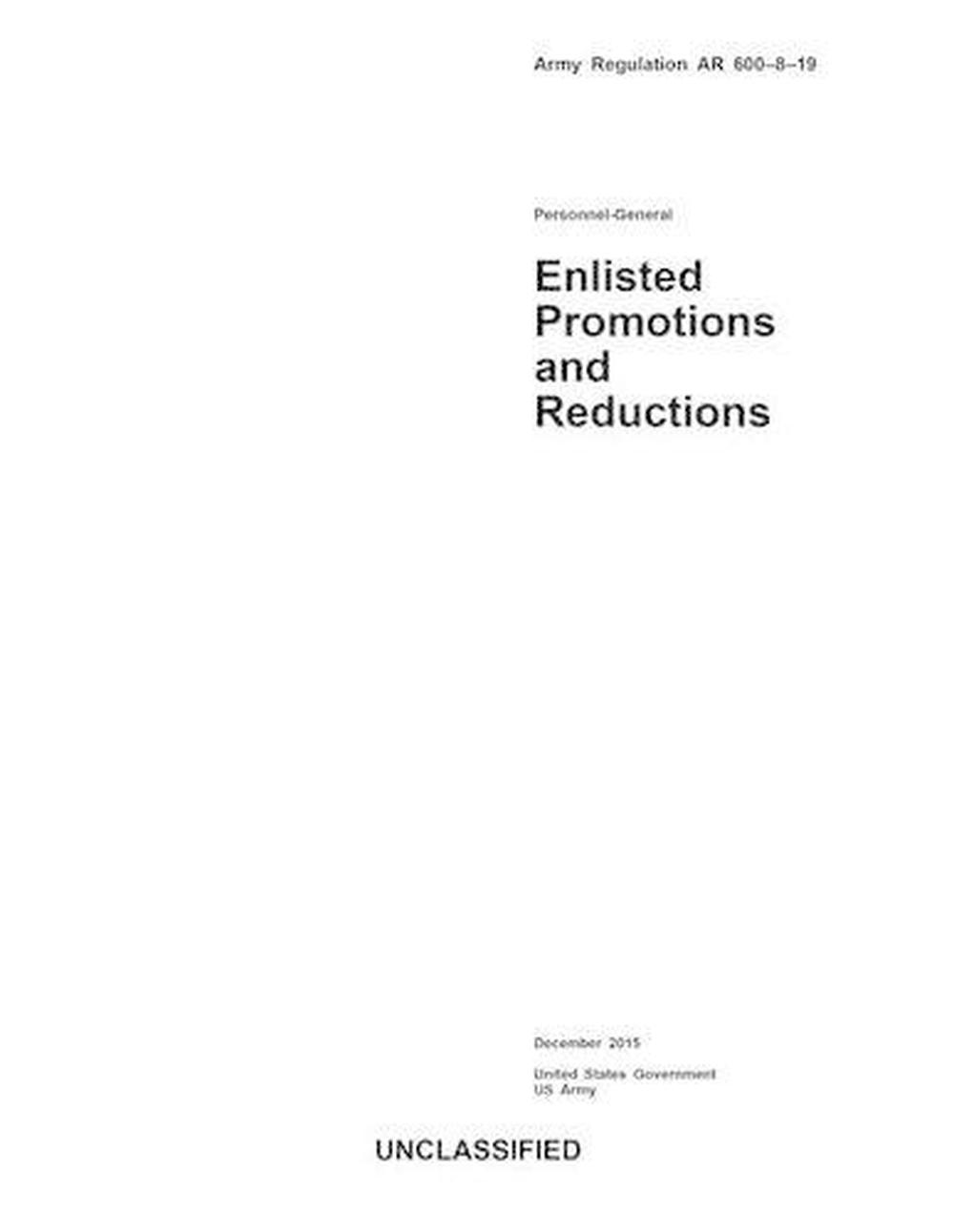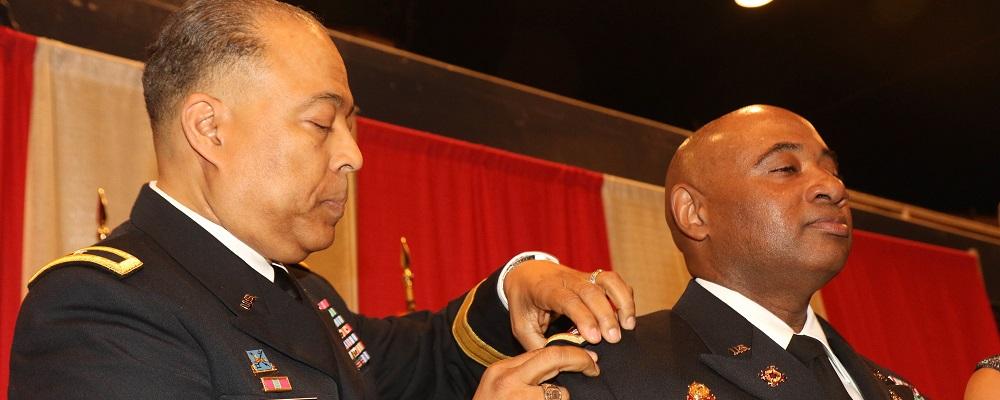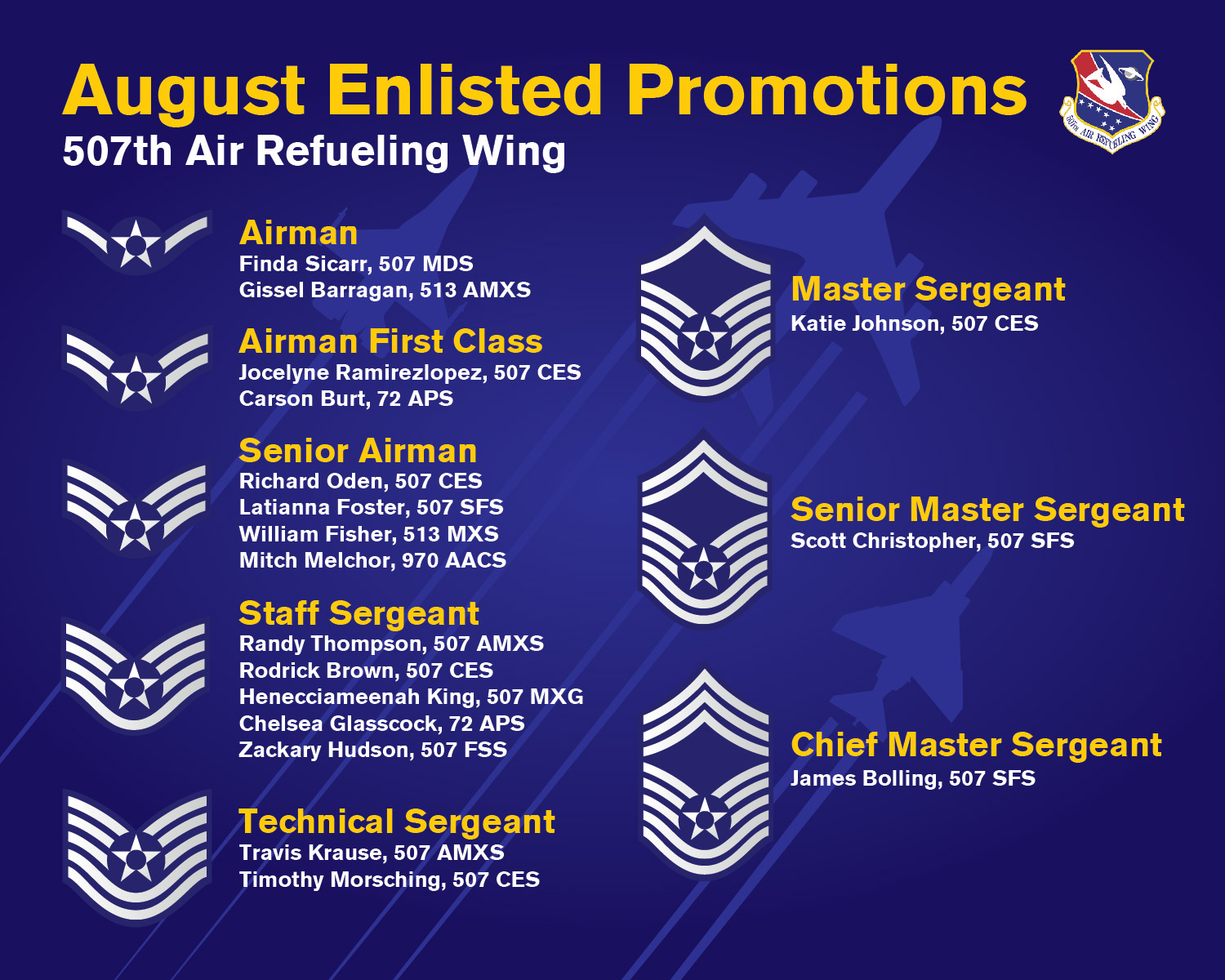Army Enlisted Promotions Regulation
Army Enlisted Promotions: Empowering the Future Leaders Introduction In the United States Army, promotions are a significant milestone in the career of an enlisted soldier. The process and regulations governing promotions play a crucial role in ensuring that the most deserving individuals ascend to higher ranks. The Army Enlisted Promotions Regulation is the cornerstone document that provides guidance and structure to this process. In this article, we will explore the key aspects of the regulation, shed light on recent updates, and address common questions and concerns related to promotions in the U.S. Army. 1. Understanding Army Enlisted Promotions Promotions are essential in recognizing and rewarding the dedication, skills, and performance of enlisted personnel. The Army's promotion system is designed to identify the most qualified individuals and prepare them for increased responsibilities and leadership roles. The Army Enlisted Promotions Regulation establishes the framework for how promotions are conducted, ensuring fairness and transparency throughout the process. The promotion system is primarily based on a soldier's time in service and time in grade. However, other factors, such as demonstrated competence, education, and physical fitness, are also considered. It is crucial to understand the specific requirements and criteria for promotion within each rank, as outlined in the regulation. 2. Recent Updates: Allowing Delayed Promotions for Army Officers In a recent development, the U.S. Army introduced a new policy that allows officers to delay the promotions process. The objective of this policy change is to provide officers with more opportunities for broadening assignments, advanced education, or professional development before assuming higher ranks. This modification ensures that officers are adequately prepared to take on increased responsibilities and contribute effectively to their units and the Army as a whole. The ability to delay promotions provides officers with valuable flexibility and allows them to engage in additional training opportunities that can enhance their leadership skills and broaden their perspectives. By encouraging officers to pursue personal and professional growth, the Army aims to build a highly capable and adaptable officer corps. 3. The Importance of Continuous Learning in Army Enlisted Promotions Promotions within the Army are not solely based on time in service or grade; they also take into account a soldier's level of knowledge, skills, and abilities. Continuous learning plays a vital role in ensuring that enlisted personnel are well-prepared for promotion opportunities. The Army provides numerous educational and professional development opportunities to help soldiers acquire essential competencies and knowledge for advancement. These may include training courses, leadership programs, and specialized certifications. By actively engaging in continuous learning, soldiers demonstrate their commitment to personal and professional growth, increasing their chances of promotion. 4. The Journey to Becoming a Non-Commissioned Officer (NCO) One of the most notable milestones in an enlisted soldier's career is the transition from junior enlisted to a Non-Commissioned Officer (NCO) role. Becoming an NCO brings increased responsibilities, the trust of subordinates, and the opportunity to shape the future of the Army. To become an NCO, soldiers must meet specific criteria, including time in service and grade, completion of required training, and the demonstration of leadership qualities. Aspiring NCOs must also pass the promotion board, a rigorous evaluation process that tests their knowledge, technical skills, and suitability for leadership positions. 5. The NCO's Role in Mentorship and Professional Development NCOs play a pivotal role in the development and mentorship of junior enlisted personnel. As experienced leaders, NCOs guide and support soldiers as they progress in their careers, providing valuable insights and guidance. The Army recognizes the vital role that NCOs serve and encourages their active involvement in the professional development of their subordinates. NCOs are also responsible for counseling soldiers, identifying areas for improvement, and recommending appropriate training opportunities. By investing time and effort into the growth of their subordinates, NCOs contribute to the overall strength and readiness of the Army. FAQs Q: What are the minimum requirements for promotion within the U.S. Army? A: The minimum requirements for promotion vary depending on the rank and career field. However, they generally involve a combination of time in service, time in grade, completion of required training, demonstrated competence, and adherence to ethical and professional standards. Q: Are promotions solely based on performance evaluations? A: No, promotions are not solely based on performance evaluations. While performance evaluations provide an important assessment of a soldier's abilities and contributions, they are only one aspect considered in the overall promotion process. Q: How competitive is the promotion process in the Army? A: The promotion process in the Army can be highly competitive, especially for ranks higher than E-4. As soldiers progress in their careers, the number of available promotion slots decreases, making the process more competitive. It emphasizes the significance of continuous learning, professional development, and exemplary performance to stand out among peers. Conclusion The Army Enlisted Promotions Regulation is a comprehensive guide that ensures fairness and transparency in the promotions process within the U.S. Army. By understanding the regulation and actively engaging in continuous learning and professional development, soldiers can position themselves for future advancement and assume leadership roles. Promotions not only recognize the dedication and commitment of enlisted personnel but also empower them to contribute more effectively to the Army's mission. The recent policy changes, increased emphasis on continuous learning, and the important role of NCOs in mentorship and guidance underline the Army's commitment to developing strong and capable leaders for the future. The Army's promotion system provides a clear and objective framework for advancement, ensuring that the most deserving individuals progress through the ranks. As enlisted soldiers aspire to higher positions, they must embrace the challenges and responsibilities that come with increased leadership roles. By doing so, they contribute to the overall strength and readiness of the U.S. Army, safeguarding the nation and its people.  Image Source : va-army.blogspot.com
Image Source : va-army.blogspot.com  Image Source : armymilitary.net
Image Source : armymilitary.net  Image Source : www.dvidshub.net
Image Source : www.dvidshub.net  Image Source : www.ngaus.org
Image Source : www.ngaus.org  Image Source : elsensato.com
Image Source : elsensato.com  Image Source : jamesapo.weebly.com
Image Source : jamesapo.weebly.com  Image Source : safeaflag.org
Image Source : safeaflag.org  Image Source : www.aftc.af.mil
Image Source : www.aftc.af.mil
√ Military Rank Us Marines - Va Army
 Image Source : va-army.blogspot.com
Image Source : va-army.blogspot.com enlisted usmc sgt ranks officer corporal pfc lcpl ened cpl calculation thebalancecareers
Army Regulation 600 8 19 - Army Military
 Image Source : armymilitary.net
Image Source : armymilitary.net DVIDS - News - Enlisted Promotion Series Article 1 Of 3: AZNG Enlisted
 Image Source : www.dvidshub.net
Image Source : www.dvidshub.net enlisted sergeant azng dvids wes parrell
New Policy Will Allow Army Officers To Delay Promotions Process
 Image Source : www.ngaus.org
Image Source : www.ngaus.org promotions promotion officers ngaus
Desglose Del Sistema De Ascenso De Rango De Alistados Del Ejército - El
 Image Source : elsensato.com
Image Source : elsensato.com Army Enlisted Promotions - Jamesapo
 Image Source : jamesapo.weebly.com
Image Source : jamesapo.weebly.com Army Hrc Senior Enlisted Promotions | Safe A Flag Military Info
 Image Source : safeaflag.org
Image Source : safeaflag.org 507th ARW August Enlisted Promotions > Air Force Test Center > News
 Image Source : www.aftc.af.mil
Image Source : www.aftc.af.mil Army enlisted promotions. Promotions promotion officers ngaus. Enlisted usmc sgt ranks officer corporal pfc lcpl ened cpl calculation thebalancecareers. √ military rank us marines. 507th arw august enlisted promotions > air force test center > news